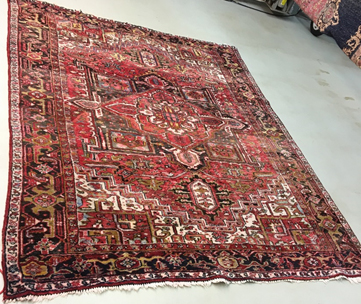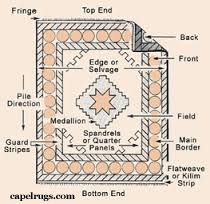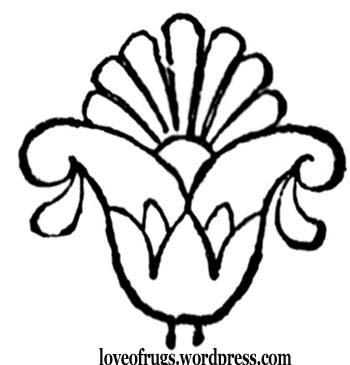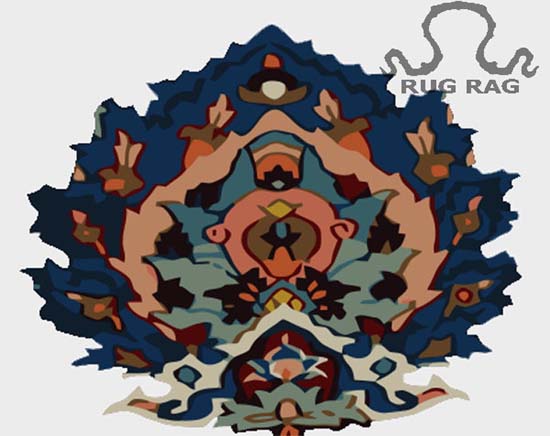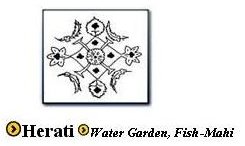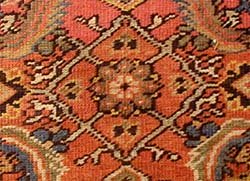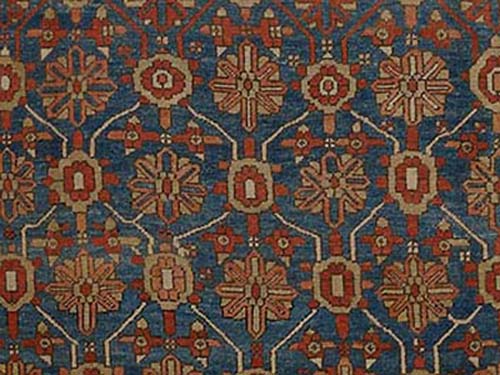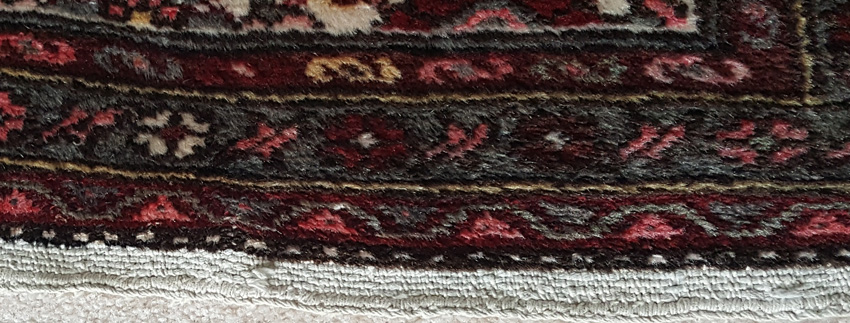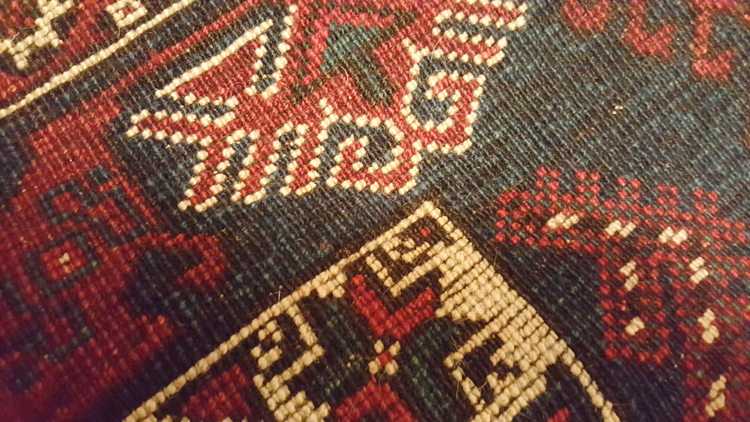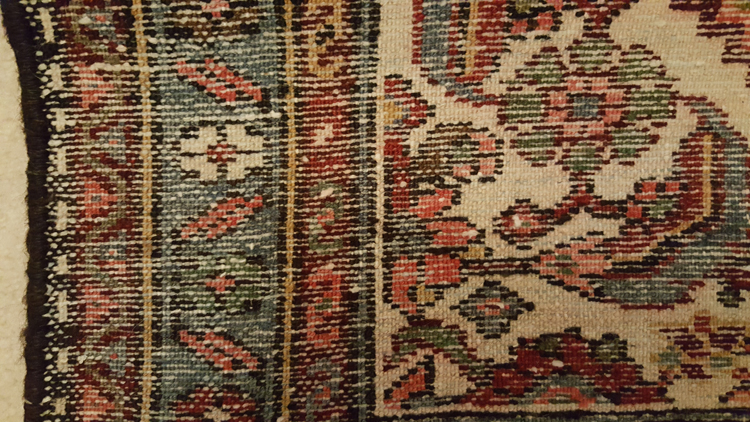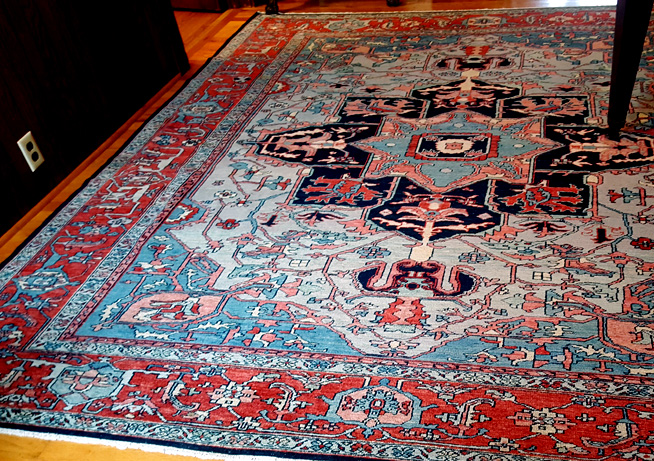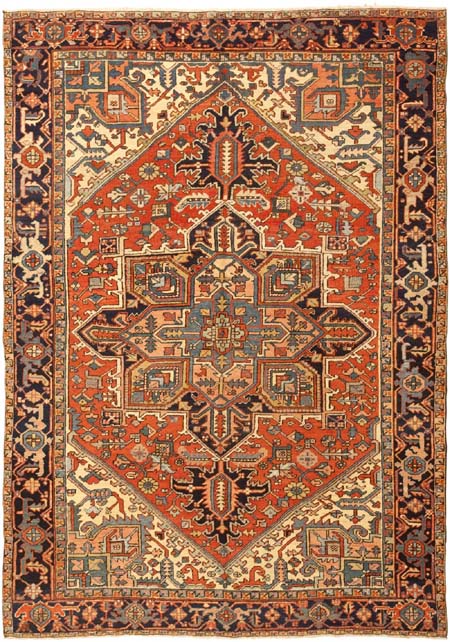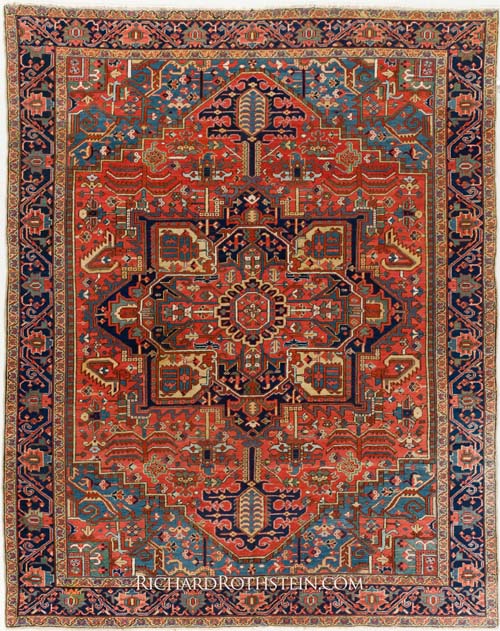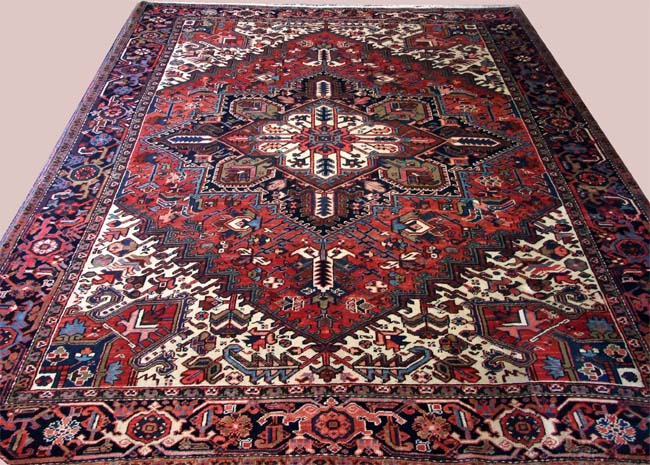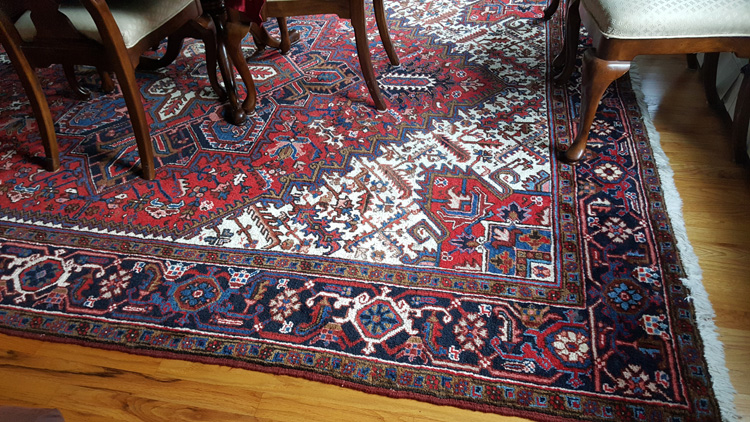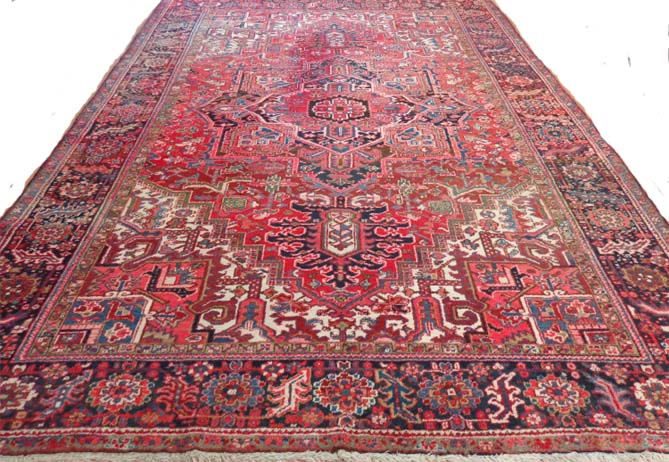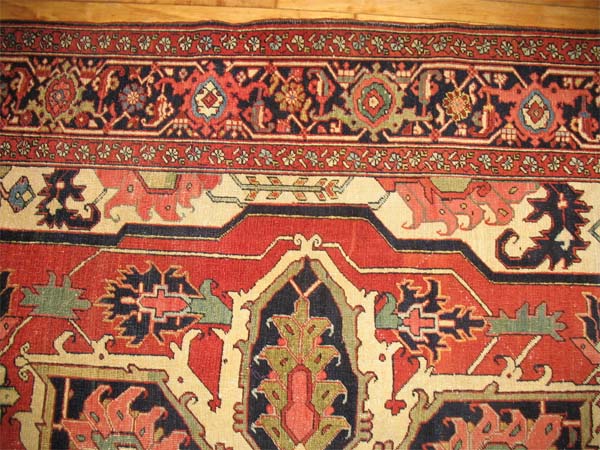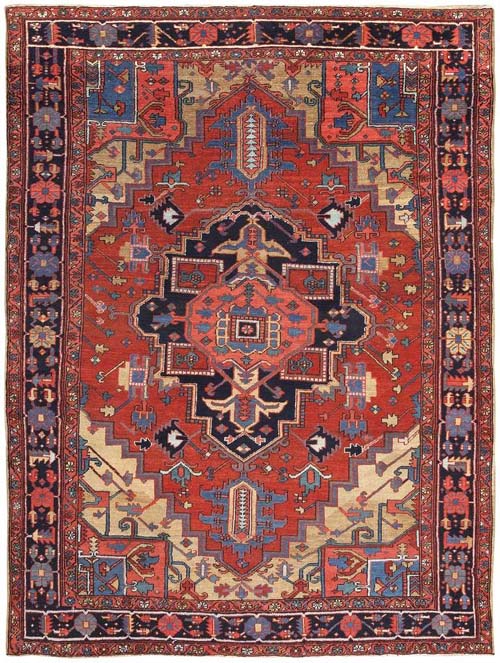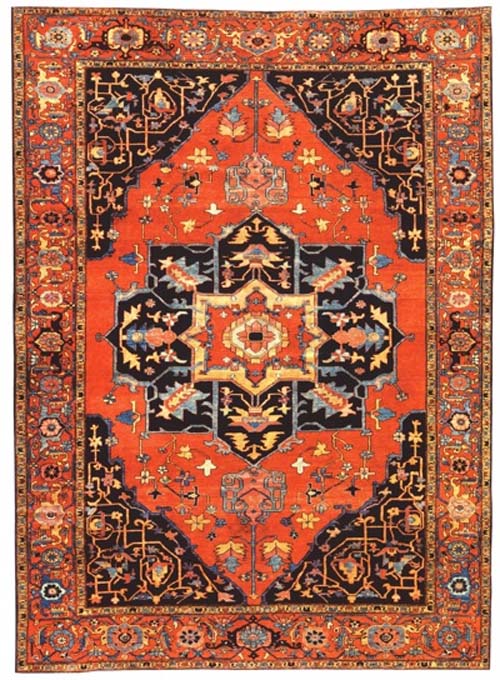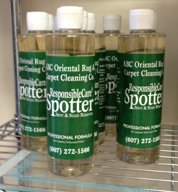HERIZ ORIENTAL RUG
DESIGN
The traditional Heriz oriental rug design consists of an easily recognizable pattern. However, the same caveats about identifying oriental rugs by their design must be repeated:
- The way to accurately identify a handwoven oriental rug is not just from the design, but from the way it is woven and the materials used.
- Many countries produce rugs with designs that may copy another country’s rug.
- Because of the individual nature of hand-woven rugs, we can study the most common examples (and there will be variations!) but we must be aware there are many exceptions to every example and the terms ’always’ and ‘never’ cannot be applied.
The Origin of the Heriz Oriental Rug Design Pattern
The most common pattern for the Heriz oriental rug design (aka Herez, Heris, Haris) originated in the town of Azerbaijan in northwest Iran. Rugs woven in the town of Heriz, as well as any of some 30 villages nearby, may be called Bakshaish, Mehraban, Serapi, and Gorevan as well as Heriz.
These names don’t always refer to the geographic locations of the weavers but may rather be used as designations of quality for the purpose of the rug trade in the Heriz district. For example, Mehraban and Serapi are sometimes used for the finer and more densely knotted rugs, while Gorevan can refer to a lower quality. Bakshaish rugs have very distinctive, rustic, and more coarsely woven patterns, very often considered to be folk art in design.
Note: The name Serapi is most often used for older Heriz rugs and is not actually a village in the Heriz district of Iran. It refers to the market area of Serab, where many Persian rugs were taken to be traded. The Serapi usually has more muted colors, larger designs and more open fields.
Very Durable Rug
The Heriz rug is known for the high quality, toughness, and resiliency of the wool used for these rugs. It is thought the trace copper in the drinking water of the sheep may be responsible. The Heriz area can be found on or around the slopes of Mount Sabalan which sits on one of the largest deposits of copper in the world.
The Traditional Heriz Oriental Rug Design
The traditional Heriz oriental rug design is a geometric lobed medallion with pendants. It appears to be a mixture of Persian and Caucasian designs. The Heriz region is not far from the Caucasus and much of the classical Caucasian tradition has been preserved in these rugs.
The most representative of the Heriz pattern will have the large central lobed medallion with pendants placed on top of a rust or brick red field with white corner spandrels and a blue border containing the Herati pattern. The field can also be filled with stylized leaf motifs and repeated palmettes. The inner and outer narrow guards (guarding the larger border) usually contain a repeating floral design.
The colors are bold with rich reds, blues, greens, and yellows. Older Heriz rugs can have a repetitive all-over palmette pattern rather than the central medallion. Herizes from after WWII usually have a red field.
The design of the Heriz oriental rug is generally rectilinear, rather than curvilinear, distinguishing it from other formal Persian designs.
Heriz Oriental Rug Foundation, Knot, and Finishing
The knot is a symmetric or Turkish knot, and the wool pile is knotted on a cotton foundation. The knot density is generally 30 to 80 knots per square inch.
KPSI-Knot Per Square Inch
in Oriental Rugs
KPSI is a quality measure used to determine knot density in Oriental Rugs.
The video below is a "How to" for quick and easy ways to determine the approximate KPSI in Oriental hand knotted rugs.
Use a quarter, and count 'em!
The sides are wrapped with a double cord which can be in a
single color or different colored wool bands. The ends can be finished as plain
or knotted fringe on both ends and may or may not have a cotton kilim.
The Heriz rug is usually a double-wefted rug. It is woven with a thick cotton warp and weft, often with 2 shoots of light blue wefts.
Though as with all oriental rugs, there are some exceptions, Heriz oriental rugs usually come in sizes of 6’x9’ and larger.
Design Outlining
One of the distinctive features of the antique Heriz design was the outlining of the motifs, sometimes with double and triple lines. With this technique, the design of the rug is separated from the field by lines in different colors. This gives the design and the colors extraordinary strength and depth.
Heriz Oriental Rug
Design
Used in Other Countries
The Heriz design is popular in other rug weaving countries, such as India (Indo-Heriz), Turkey, and Afghanistan. Contemporary Heriz rugs use chemical dyes.
Some beautifully woven, finely knotted silk rugs are also labeled as Heriz silk rugs but thought by some to be woven elsewhere. They may have been given the name Heriz because of their weave and because the name Heriz has a drawing power with buyers.
Interior Design
The Heriz pattern is a strong and bold design, perfect for rooms such as studies or libraries, and goes equally as well in living rooms and dining rooms. The rich colors are a perfect complement to wood.
The large size of these rugs can really stand out and make a beautiful statement. Smaller sized Heriz rugs are often square, rather than rectangular, providing a different look and feel to a room.
Top of Heriz Oriental Rug Design
"The Cleanest Clean You've Ever Seen."
by
ABC Oriental Rug & Carpet Cleaning Co.
130 Cecil Malone Drive Ithaca, NY 14850
607-272-1566
ABC
Carpet & Rug
Spotting Guide
Learn how to remove spots with ordinary household solutions
Sign up below to gain access to your complementary Spotting Guide from ABC.
Registering your email address guarantees you will be notified whenever discount savings coupons become available.
Did you know that our ABC Responsible Care Spotter can get those pesky spots out of your carpet and rugs and will work equally as well on your clothes and upholstery?
Stop by our office and pick one up. They are $5.00 + Tax but if you have carpets or upholstery cleaned in your home or business, just request a free one from your Technician.
And don't forget to fill out the form above to download your free ABC Spotting Guide!

Give the Gift of ABC CLEAN!
Gift Certificates Make Great Gifts!
Call Today
607-272-1566
or
Stop In to Order
Oriental and Area Rug Washing at ABC Oriental Rug
Rugs on the wash floor are gently scrubbed before thorough rinsing.
Gentle scrubbing continues. Note the wringer in the background-the next step in the washing process after rinsing.
After thorough rinsing, the rug is sent slowly and carefully through the wringer to take out as much of the water as possible before being hung on racks in the drying room.
Rugs are hung on a rack in the temperature controlled drying room until completely dry.
